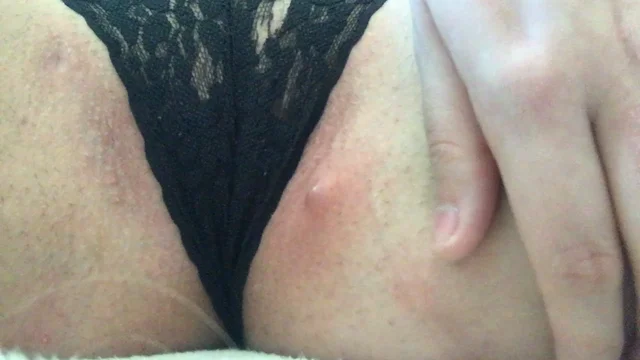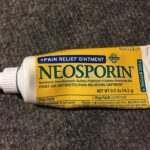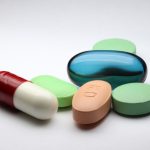15 Home Remedies For Cyst Pimples On Female Private Parts

The term “private parts” generally refers to the external genitalia of females, which include the vulva and vagina. The vulva encompasses the outer parts of the female genitalia, including the labia majora (outer lips), labia minora (inner lips), clitoris, vaginal opening, and urethral opening.
A cyst is a sac-like structure that can form in various parts of the body, including the skin, organs, or tissues. Cysts can be filled with fluid, semi-solid material, or air. They can vary in size and may or may not cause symptoms, depending on their location and underlying cause.
A cystic pimple, specifically, refers to a type of acne lesion that is characterized by a large, deep-seated, and often painful bump beneath the skin. It occurs when the hair follicles or pores become clogged with excess oil (sebum), dead skin cells, and bacteria. The clogged pore leads to the formation of a plug, which can result in the growth of bacteria and inflammation. In some cases, this inflammation can lead to the development of a cystic pimple.
Cystic pimples tend to be more severe than regular pimples or whiteheads, as they are deeply embedded in the skin. They can be painful, red, and swollen. Cystic acne commonly occurs on the face, but it can also develop in other areas, including the back, chest, and in some cases, the genital area.
Cystic pimples on the private parts of females can be a source of discomfort and concern. These cysts can have various causes that include:
1. Bartholin’s cyst: The Bartholin’s glands are located on either side of the vaginal opening. If the ducts of these glands become blocked, fluid can accumulate, resulting in the formation of a Bartholin’s cyst. These cysts typically appear as painless lumps in the vaginal area.
2. Sebaceous cyst: Sebaceous cysts can occur when the sebaceous glands become blocked or damaged, leading to the accumulation of oil and dead skin cells. They can manifest as painless, round lumps beneath the skin.
3. Follicular cyst: These cysts develop when a hair follicle becomes clogged or inflamed. They can appear as red, painful bumps or pustules in the pubic area.
4. Acne or pimples: Just like any other area of the body, the private parts can be susceptible to acne or pimples. These can be caused by factors such as hormonal changes, excess sebum production, or bacterial infections. Acne in the pubic area may present as inflamed, pus-filled cysts or papules.
It’s important not to squeeze or pop cystic pimples in the private area, as this can lead to further inflammation, infection, and scarring.
15 Home Remedies For Cyst Pimples On Private Parts
While home remedies may provide temporary relief or aid in reducing discomfort, it’s important to consult a healthcare professional for a proper diagnosis and appropriate treatment of cystic pimples on the private parts. However, here are some general home remedies that may help alleviate symptoms:
1. Warm compress: Soak a clean washcloth in warm water, wring out the excess moisture, and gently apply it to the affected area. The warmth helps increase blood circulation, reduces inflammation, and promotes healing.
2. Tea tree oil: Dilute tea tree oil with a carrier oil, such as coconut oil, in a 1:9 ratio. Apply the diluted solution to the cystic pimple using a cotton swab or pad. Tea tree oil has antimicrobial properties that can help kill bacteria and reduce inflammation.
3. Witch hazel: Dab witch hazel extract onto a cotton ball and gently apply it to the cystic pimple. Witch hazel acts as an astringent, helping to reduce swelling and inflammation.
4. Aloe vera: Extract the gel from an aloe vera leaf and apply it directly to the pimple. Aloe vera has soothing and anti-inflammatory properties that can provide relief and aid in healing.
5. Epsom salt bath: Add Epsom salt to warm bathwater and soak in it for 15-20 minutes. Epsom salt contains magnesium sulfate, which can help reduce inflammation and ease discomfort.
6. Apple cider vinegar: Dilute apple cider vinegar with equal parts of water and apply it to the pimple using a cotton ball. Apple cider vinegar has antibacterial properties that may help combat infection and reduce inflammation.
7. Garlic: Crush a garlic clove and apply the juice directly to the pimple. Garlic contains allicin, a compound with antimicrobial properties that can help kill bacteria and reduce inflammation.
8. Honey: Apply a small amount of raw, organic honey directly to the pimple and leave it on for 15-20 minutes before rinsing off. Honey has antibacterial properties and can soothe the skin.
9. Turmeric paste: Mix turmeric powder with water to form a paste and apply it to the pimple. Turmeric contains curcumin, a compound with potent anti-inflammatory and antimicrobial properties.
10. Green tea bags: Steep green tea bags in hot water, allow them to cool, and place them on the pimple for 10-15 minutes. Green tea is rich in antioxidants and has anti-inflammatory effects.
11. Oatmeal paste: Mix ground oatmeal with water to create a paste and apply it to the pimple for 15-20 minutes. Oatmeal has soothing properties that can help reduce inflammation and alleviate itching.
12. Cold milk compress: Soak a cotton ball in cold milk and gently apply it to the pimple for 10-15 minutes. The coolness of the milk can help reduce swelling and discomfort.
13. Cucumber slices: Slice a chilled cucumber and place the slices on the pimple for 10-15 minutes. Cucumbers have cooling properties that can help reduce inflammation and soothe the skin.
14. Avoid picking or squeezing: It’s essential to resist the urge to pick or squeeze the cystic pimple, as it can worsen inflammation and increase the risk of infection and scarring.
15. Maintain good hygiene: Keep the affected area clean by washing gently with mild, fragrance-free soap and warm water. Avoid using harsh cleansers or scrubbing vigorously, as it can further irritate the skin.
Remember, while these home remedies may provide relief, they may not address the underlying cause of the cystic pimple. If the condition persists, worsens, or is accompanied by severe pain or other concerning symptoms, it’s important to consult a healthcare professional for proper diagnosis and appropriate treatment.
How Is Cyst Pimples On Private Parts Treated
Cystic pimples on the private parts should be treated by a healthcare professional, such as a dermatologist or gynecologist. They can accurately diagnose the condition and recommend the most appropriate treatment options based on the underlying cause and severity of the cystic pimples.
Here are some common treatment approaches for cystic pimples on the private parts:
1. Prescription medications: Depending on the nature of the cystic pimples, your healthcare provider may prescribe topical or oral medications. These can include antibiotics to combat bacterial infections, retinoids to reduce inflammation and unclog pores, or hormonal therapies to address hormonal imbalances.
2. Intralesional injections: For larger or more persistent cystic pimples, your healthcare provider may recommend intralesional injections. This involves injecting a corticosteroid directly into the pimple to reduce inflammation and promote healing.
3. Incision and drainage: In some cases, particularly if the cystic pimple is large and causing significant pain or discomfort, your healthcare provider may perform a minor surgical procedure to make an incision and drain the contents of the pimple.
4. Excision: If the cystic pimple is recurrent or doesn’t respond to other treatments, surgical excision may be necessary. This involves removing the entire cyst or the cyst wall to prevent future occurrences.
5. Warm compress and topical treatments: Your healthcare provider may recommend applying warm compresses to the affected area to reduce inflammation and promote healing. They may also suggest specific topical treatments, such as antibiotic ointments or anti-inflammatory creams, to apply to the pimple.
It’s important to note that self-treatment or attempting to squeeze or pop cystic pimples on your own is not recommended, as it can lead to further inflammation, infection, and scarring. Consulting a healthcare professional ensures proper diagnosis and appropriate treatment to effectively manage cystic pimples on the private parts.





